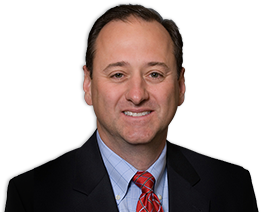Lumbar Degenerative Disc Disease
Lumbar degenerative disc disease is characterized by the breakdown of intervertebral discs in the region of lumbar spine (lower back) compressing nerve structures such as spinal nerve and spinal cord.
Low back pain is most common in patients with lumbar degenerative disc disease.
Introduction
Human body spine (back) is made up of 24 vertebrae (bones) that are connected to each other by intervertebral discs. Together, the lower 5 vertebrae (lumbar vertebrae) that make the lower back is known as lumbar spine.
The intervertebral disc contains a tough, flexible outer ring (annulus fibrosus) surrounding a soft, jelly like nucleus (nucleus pulposus) at the center. Discs provide cushion to the vertebral bones and protect them during strenuous activities like jumping, running, and lifting.
Causes
As we grow older, the intervertebral discs lose their water content, shrink and the space between the vertebrae become narrow. Due to this, discs loses their ability to act as shock absorbers and the spine becomes less flexible. In addition to aging, induced natural wear and tear, and smoking also contribute to the degeneration of the disc. Gradually, the disc between the vertebral bodies degenerate resulting in disc degeneration.
Initially, the nucleus at the center of the disc loses its ability to absorb water, and becomes thick and dehydrated. Therefore, it loses the ability to absorb shock or to sustain the routine stress and strain, resulting in the rupture of the annulus (outer layer). Further, the disc weakens and starts to collapse, making the bone space narrow, and compresses the nerve structures.
Symptoms
In patients with degenerated lumbar disc, lower back pain is the common symptom. The other symptoms include:
- Pain in the lower back that extends to the hip and legs
- Numbness, weakness or tingling sensation in the legs
- Worsening of pain while sitting, standing, walking or even laying down
- Increased pain by certain physical movements such as bending, twisting or lifting
Diagnosis
Your physician diagnoses lumbar degenerated disc based on your symptoms, medical history, and by performing physical examination of your lower back (lumbar spine). The physician checks your spine for flexibility, range of motion and other signs that suggest the presence of a degenerated disc. Your physician may also request an X-ray, CT (contrast tomography) or MRI (magnetic resonance imaging) scan to locate the degenerated disc in the lumbar spine (lower back).
Treatment
Treatment of the lumbar degenerative disc involves non-surgical therapy and surgical therapy.
Non-surgical therapy include physical therapy, using braces and medications. In patients with degenerated lumbar disc, physical therapy, exercise and continuation of daily activities are recommended over bed rest. Braces are advised to keep the back bone in proper position. Drugs can be prescribed to reduce pain (pain killers) and inflammation (anti-inflammatory drugs). In some patients, steroid injections are required to reduce severe pain and swelling.
Surgical approaches to treat lumbar degenerated disc include lumbar laminectomy, discectomy and fusion. Surgery is recommended only after non-surgical treatment fails to improve the symptoms.
- Lumbar laminectomy involves removal of lamina, a roof like structure over the back of spinal column, to relieve pressure/compression on the spinal nerves.
- Discectomy involves removal of total or a part of the damaged disc that is compressing the nerve structures.
- Fusion involves fusing the vertebral bones around the herniated disc to prevent it from collapsing. Fusion allows the bones and disc to grow together as a single bone avoiding movement between the fused bones.











